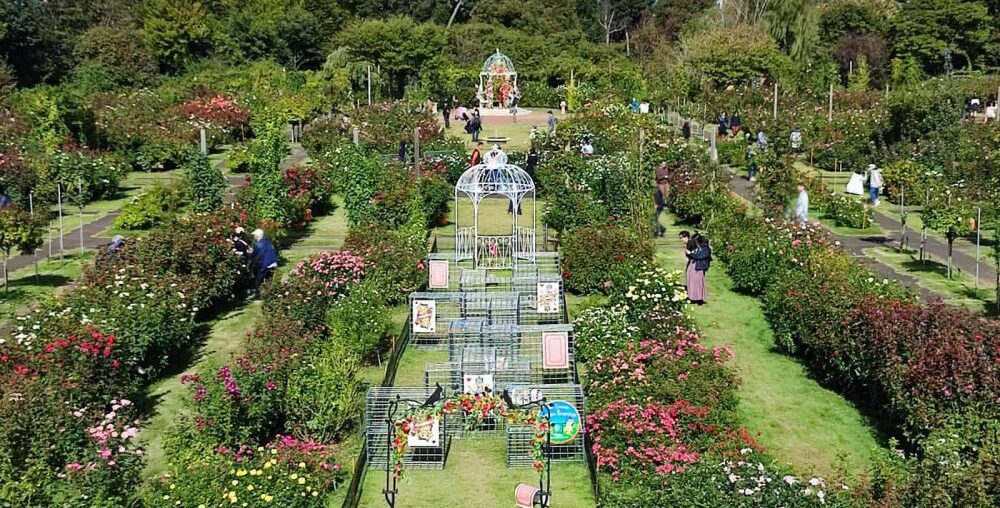In looking for a previously unexplored place to visit on a day trip from Tokyo, my wife hit upon the Keisei Baraen (Keisei Rose Garden) operated by the Keisei Group, which runs Keisei Electric Railway. I was interested because of the opportunity to do close-up photography and to build on my previous articles about rose-viewing venues in Tokyo.
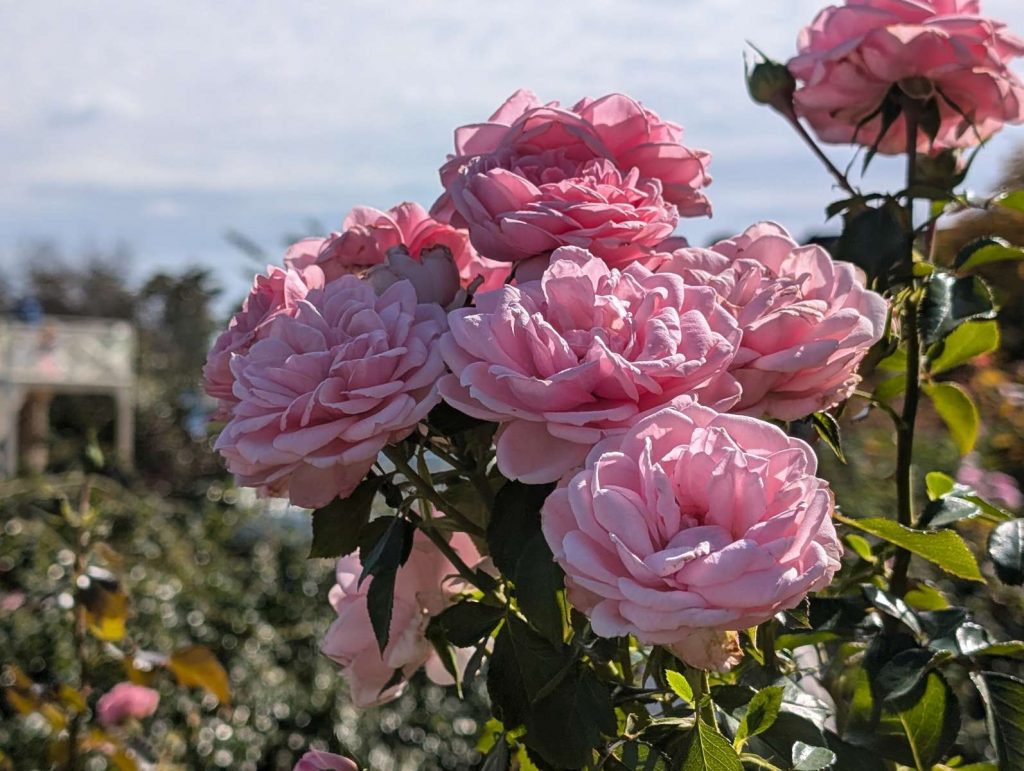

Keisei Rose Garden
While a rose garden might seem an odd venture for a railroad company, Japanese railroad operators are conglomerates that leverage their railroad and bus lines to generate traffic for their department stores and to add value to real estate development along their lines. They also develop attractions that build off-peak traffic for their commuter lines.


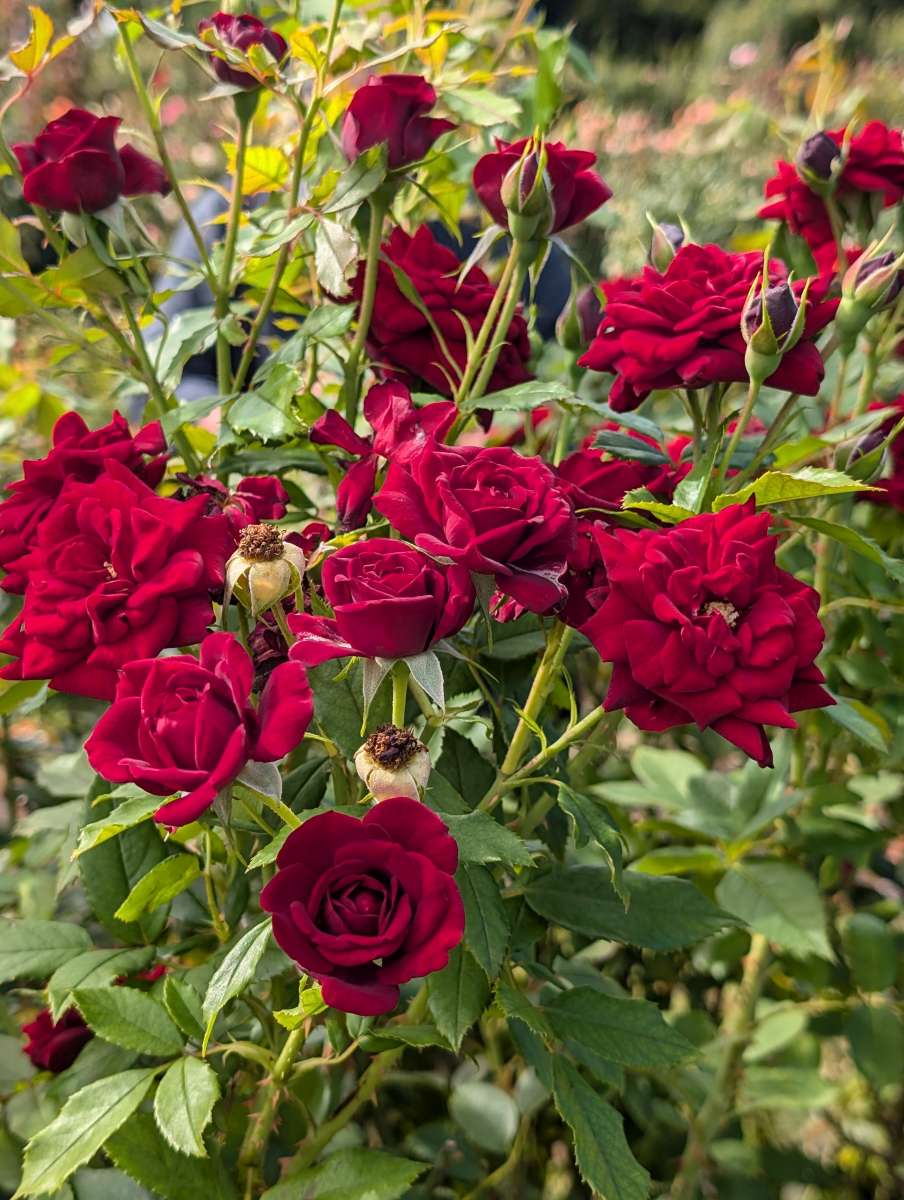

The Keio Line on the west side of Tokyo has a garden noted for its ume (flowering plum) trees (Mogusaen) and has a branch line just to serve the very popular Takao-san (Mt Takao).
The Park occupies the site of a defunct amusement park and offers more than 10,000 bushes covering more than 1600 varieties. It also offers a garden center catering to those growing roses in their home gardens. Instruction in rose growing is given on-premise and via a YouTube channel. Announcements are made on X, FaceBook, and Instagram.


Getting There
Somewhat unusually, the Rose Garden is not in close proximity to a Keisei station. Rather, it is within walking distance from Yachiyo-Midorigaoka Station on the Toyo Rapid Line, a direct extension of the Tokyo Metro Tozai Line with through trains to and from Nakano.
Nonetheless, an all-inclusive ticket provides access via the Keisei and Toyo Lines covering all public transportation and garden admission for ¥2,700 JPY (about $18 USD). It offers a substantial saving compared to using only the Tokyo Metro in exchange for a somewhat more circuitous route and 10 minutes greater travel time.
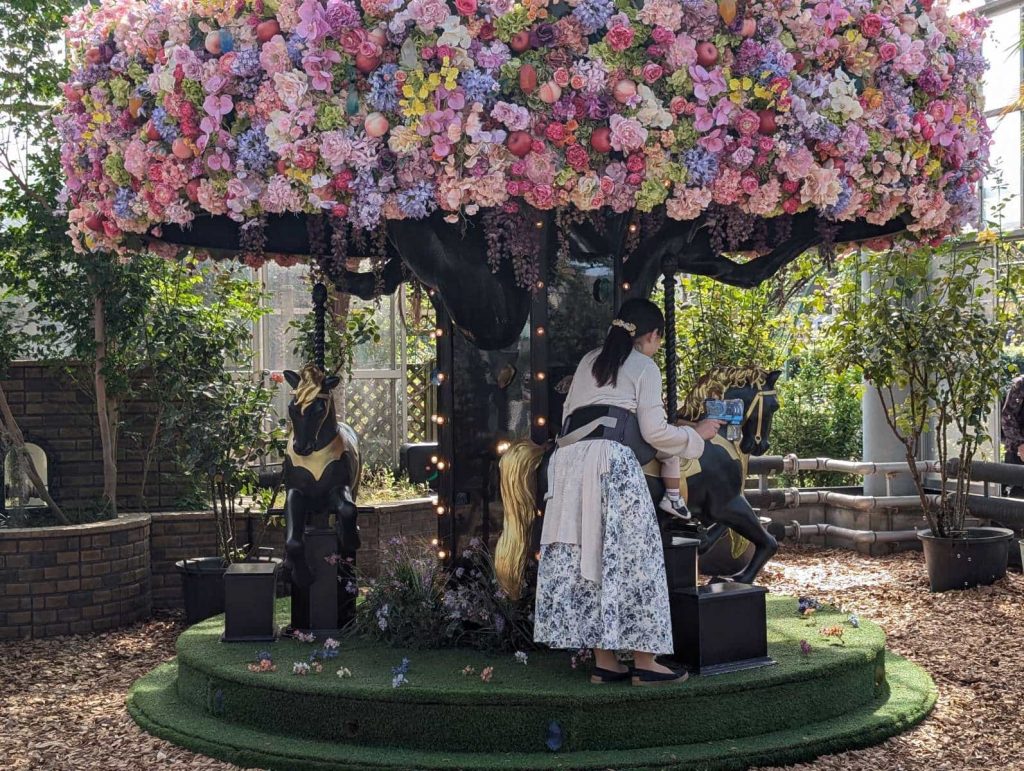

Basic admission is ¥1800 for adults during the spring rose season and ¥1500 during the fall season, ¥500 at other times.
There is parking for 700 cars. However, the garden brochure warns that when the roses are in bloom, roads between it and the nearest motorways can be very congested with 90–120 minute tailbacks.
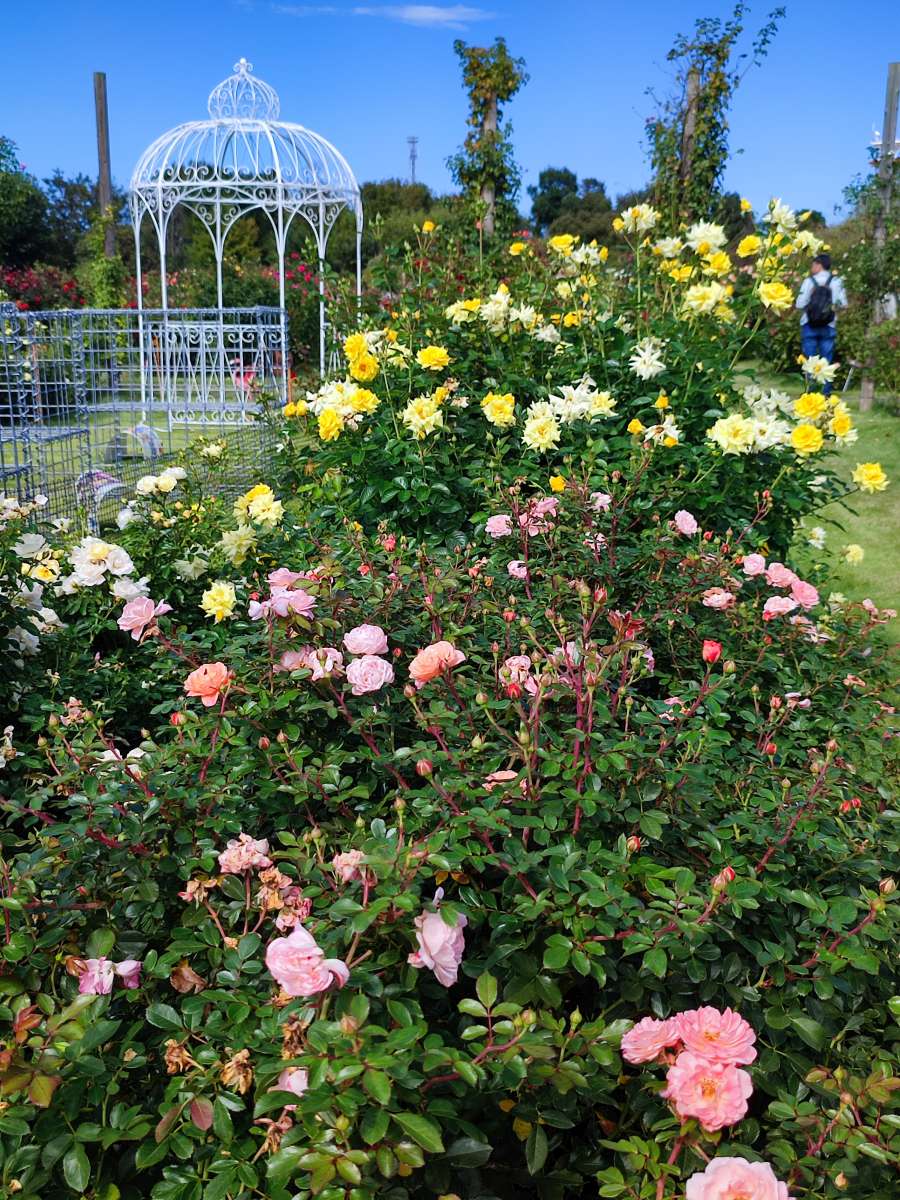

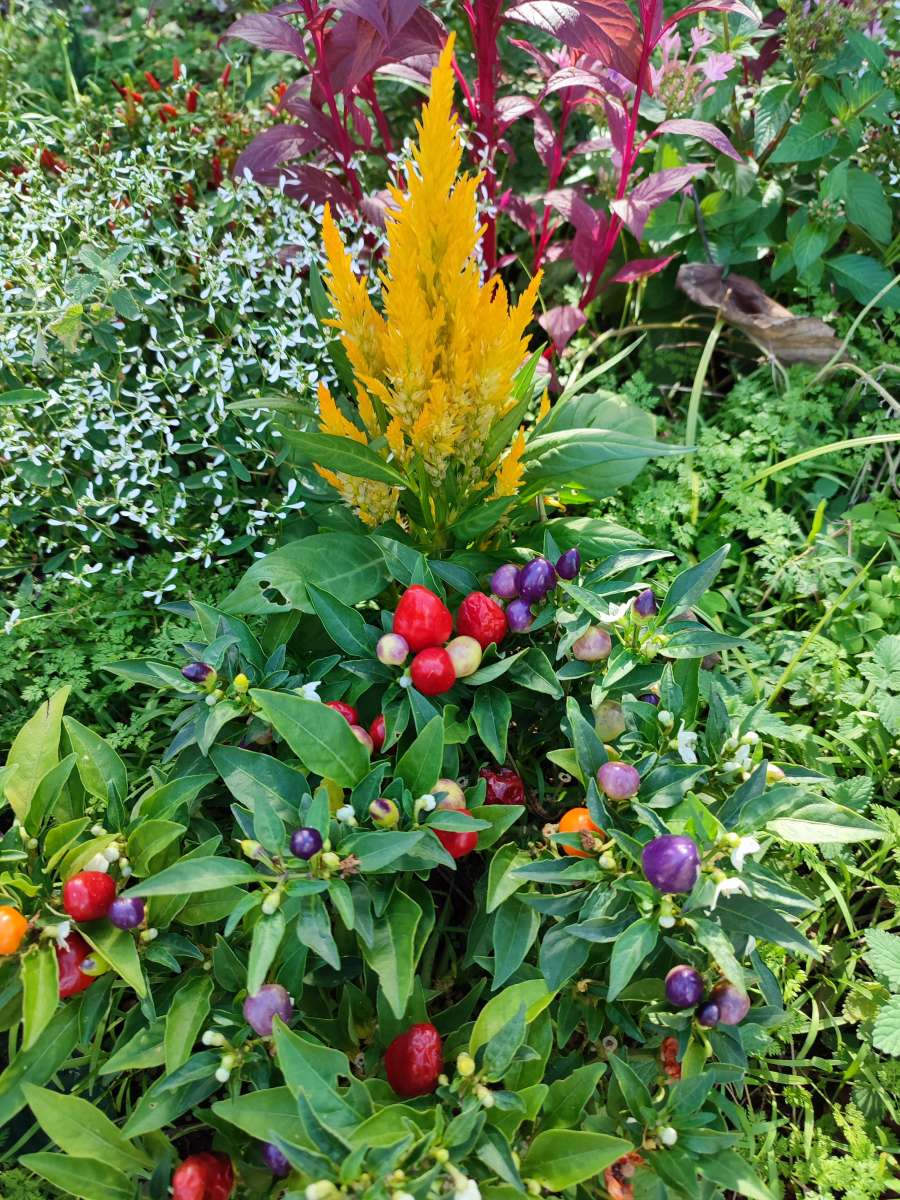

Access and Food
The garden is largely flat and is stroller and wheelchair friendly. Loaner wheelchairs are available at the entrance.
A certain amount of snack food is available within the garden. We had rose-flavored gelato — very tasty. There is one restaurant just outside the entrance to the garden and numerous restaurants around the Yachiyo Midorigaoka Station. The pond area is suitable for picnics.
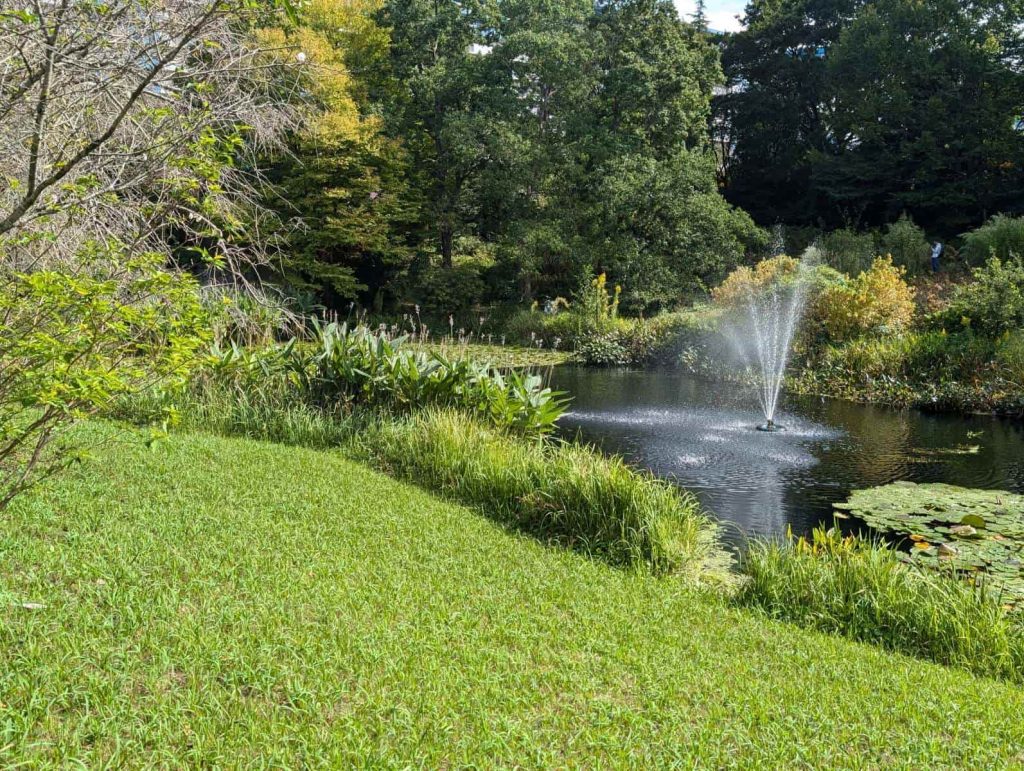

Beautiful and Educational
Some might find decoration in the garden rather twee and the decoration rather kitschy, but my wife and I both enjoyed the garden, especially the parts where roses were mixed with other flowering plants and shrubbery.


The commercial aspect is low-key. A wide range of visitors, from young children, cosplayers, young couples, and the very elderly were enjoying the roses and the general garden ambiance. A visit is also educational in terms of rose growing, railroad management, and suburban development in Japan.
As a social historian, the role of commuter railroads in shaping life in Japan is one of several subjects in which I have a particular interest. The Keisei Rose Garden and the rail line that serves it are a case in point.
The walk to and from the Yachiyo Midorigaoka Station to the garden was particularly interesting. To the south were rather generic clusters of small apartments while to the north were single-family homes substantially larger than is typical in Britain where I am a homeowner.
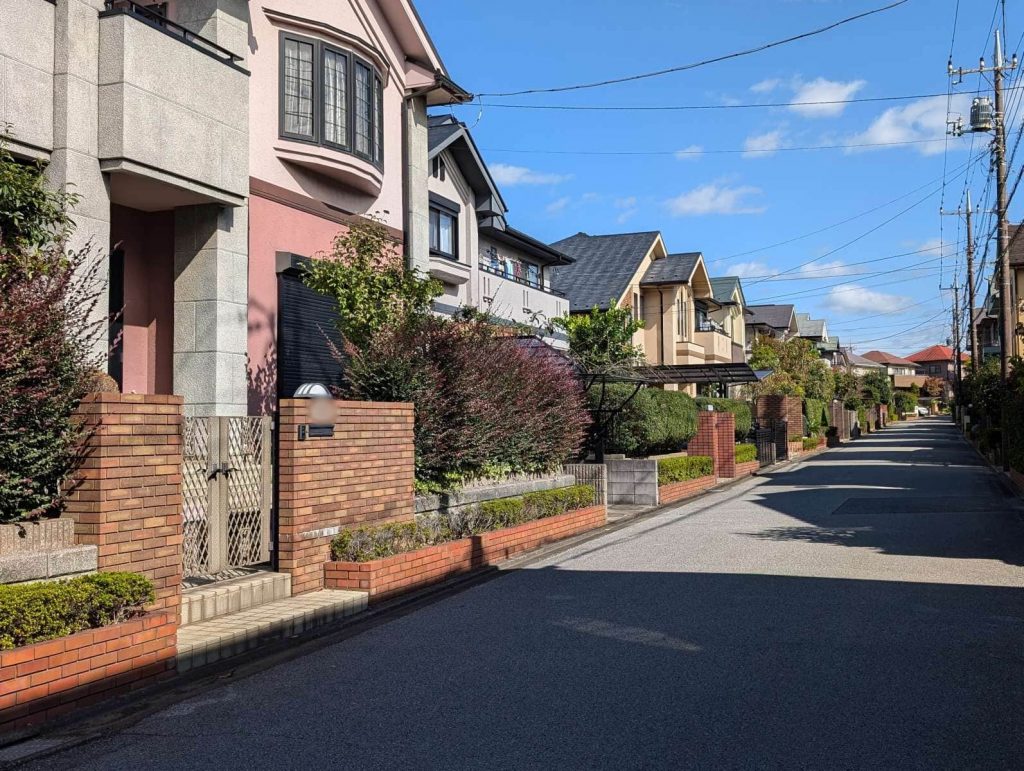

RELATED:
Author: Earl H Kinmonth
Photographs by EH Kinmonth. Find other stories about Tokyo and nearby areas by Dr Kinmonth.
